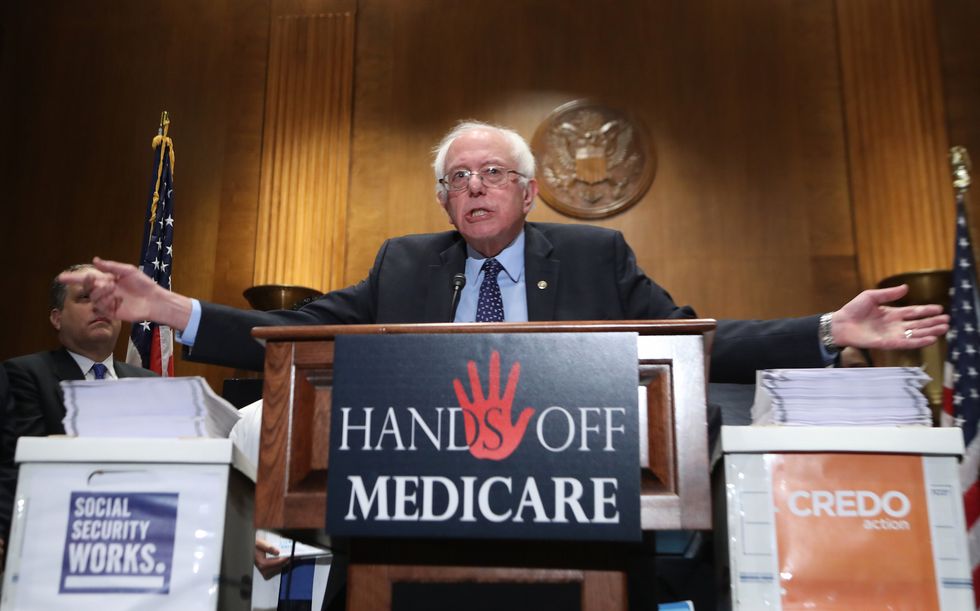While the bulk of progressive America is still flailing about in disbelief over the election of Donald Trump, a group of progressives is aggressively cobbling together a plan to obstruct the president-elect's policy goals using the 2009 Tea Party uprising against President Barack Obama as a blueprint. However, there is one principal difference: Unlike the anti-Obama Tea Party, which did not have an identifiable single leader, the progressive movement plans to rally around an open socialist: Vermont Sen. Bernie Sanders (I).
Of course, progressives have attempted to replicate the political success of the Tea Party before. The abortive and largely ineffectual Occupy Wall Street movement was intended to be a progressive response to the Tea Party effort, but even after being lavished with generous media coverage, Occupy Wall Street petered out without any lasting political impact.
Progressives believe they have learned from the failures of Occupy Wall Street and the successes of the Tea Party, and their first goal is to seize firmer control of the Democratic Party apparatus. Up first on their agenda is an aggressive campaign to promote progressive Rep. Keith Ellison (D-Minn.) to be the new Democratic National Committee chairman. Ellison promises to be a lightning rod for controversy, but his candidacy is enthusiastically supported by Sanders and his influential followers:
Sanders’ first priority is to elect Keith Ellison, the progressive congressman from Minnesota, as DNC chair. Ellison, who is seen as the frontrunner, is being challenged by the labor secretary, Tom Perez, who enters with support from allies of [Hillary] Clinton and the Obama administration.
“Right now we are fighting for the chair of the DNC and it is truly emblematic of the division within the Democrats,” said RoseAnn DeMoro, executive director of the National Nurses United, which endorsed Sanders during the primary. “If the Democratic party rejects the Sanders base, it will be at their extreme peril.”
Beyond that, progressives understand that they are in a position similar to what Republicans assumed in 2009: largely unable to stop the president's agenda without help from vulnerable senators from across the aisle. Democrats are already openly musing about how to force Trump and the Republicans to overplay their hand by nuking the filibuster and allowing Trump to pursue policies they believe will be broadly unpopular. They hope to use this to their advantage in the upcoming elections to solidify their bargaining power:
On a tactical level, all eyes are on 2018 and how to elect progressives to seats at the local, state and national level.
“We have to do in 2018 what the Tea Party did in 2010,” said Dan Cantor, the founder and executive director of the Working Families party.
The problem progressives face is that the 2018 electoral map presents a brutal challenge for Democrats, particularly in the Senate. Democrats will be defending an astounding 25 seats in the Senate, compared to only eight for Republicans. Moreover, none of the Republican seats up in 2018 is in a state won by Democratic presidential nominee Hillary Clinton in 2016, whereas Democrats will be defending 10 seats in states won by Trump.
Democrats' best chance in 2018 might well be to retake the House and replicate the Republicans' tactics of forcing constant budget showdowns with Trump over policy areas that are mostly unrelated to the actual budget.
Progressives know that they face a difficult four years ahead from a policy standpoint, but they are prepared to accept that reality for the sake of improving their position within the Democratic Party, so that when 2020 rolls around, they can force upon the party a candidate who is truly one of their own to run against Trump.




